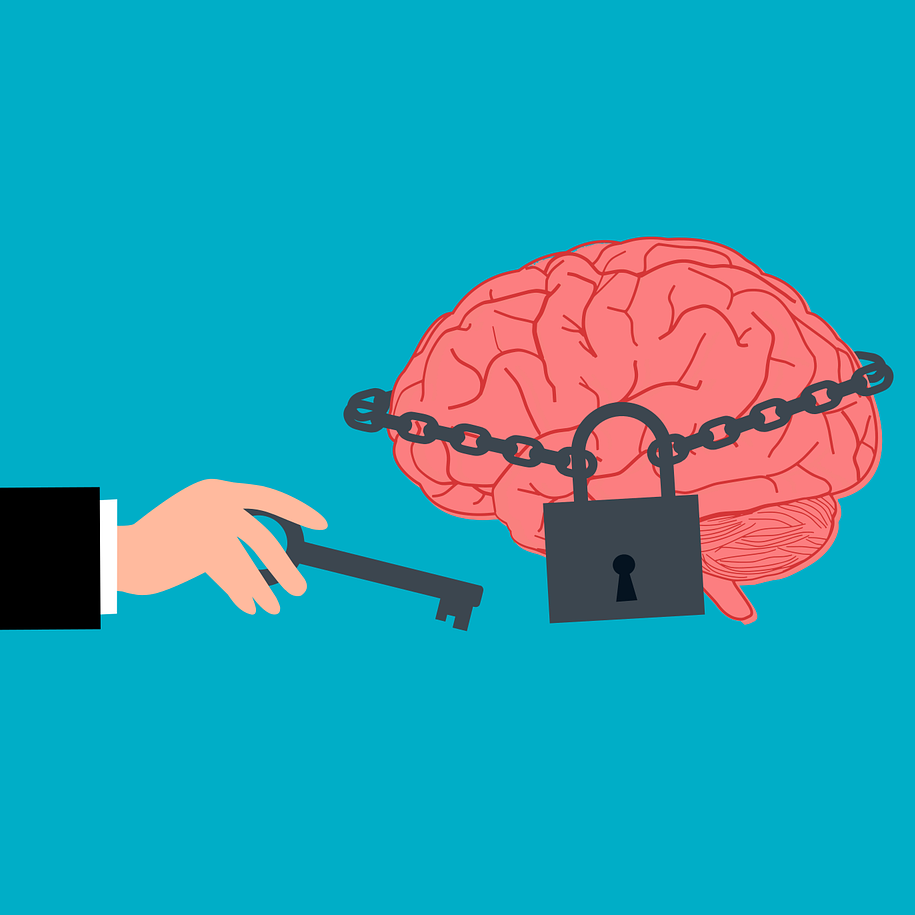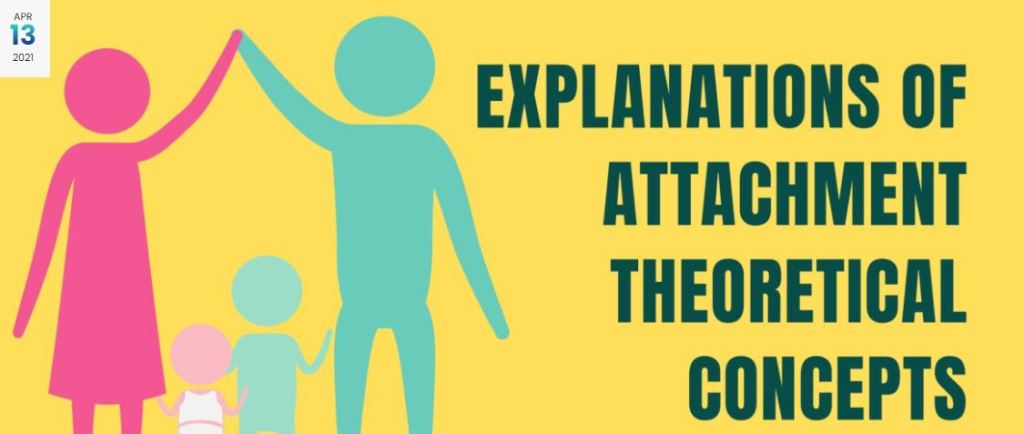
Attachment Theory – A Social Neuroscientist’s Perspective
According to attachment theory (developed by Mary Ainsworth and John Bowlby about 70 years ago), every child is born with an innate attachment behavioural system (that is complementary to a caregiving behavioural system). The attachment behavioural system’s biological function is to enhance the chances of survival through proximity seeking, particularly in times of distress and need.
Because attachment is a natural social survival mechanism, (almost) all children become attached to one or several significant other(s) – mostly their caregiver(s). However, the quality of attachment will vary considerably, which is reflected by interindividual differences in attachment.

These interindividual differences are thought to emerge through repeated interactions between children and their caregiver(s), primarily depending on: i) children’s success in eliciting proximity and care, as well as ii) the availability and responsiveness of their caregiver(s). Additional factors are also being discussed (see below).
In the ensuing sections, a social neuroscientist’s perspective of attachment is provided. This includes concepts such as attachment security, insecurity and disorganisation, internal working models, bio-behavioural synchrony and many more. These concepts are also compared to other psychology and social neuroscience theories.
Securely Attached Brain
Do you want to read a concise and accessible summary of the social neuroscience of human attachment? Then this series about “Is your brain securely attached? A social neuroscience perspective on attachment” is made for you! So far, there are two posts available – Volume 2 published on 07 December 2022 and Volume 1 published on 19 May 2022.
1. A Cautionary Note on Attachment Language
Please be aware that many of the concepts used by attachment researchers take terms from ordinary language but ascribe them technical meanings. This has resulted in extensive confusion, hindering the advance of attachment science by obstructing discussions between researchers and the potential for mutual benefit in dialogue between researchers and practitioners. The Society for Emotion and Attachment Studies (SEAS) addresses this issue by providing an excellent free online guide comprising many very useful explanations of attachment theoretical concepts that is strongly recommended as further reading.

Very good additional resources in the form of scientific articles are:
►Verhague et al. (2022) – On the need for clarity about attachment terminology
►Beckwith et al. (2022) – A “transmission gap” between research and practice? A Q-methodology study of perceptions of the application of attachment theory among clinicians working with children and among attachment researchers
►Duschinsky et al. (2021): – Six attachment discourses: convergence, divergence and relay
►Forslund et al. (2021) – Attachment goes to court: child protection and custody issues
►Granqvist et al. (2017) – Disorganized attachment in infancy: a review of the phenomenon and its implications for clinicians and policy-makers
A short and accessible summary of attachment researchers’ recent efforts to raise awareness about the confusion surrounding attachment theory can be found here – Dr Vrticka’s piece in The Conversation UK about “Attachment theory: what people get wrong about pop psychology’s latest trend for explaining relationships“.
2. Secure Attachment

If children’s proximity seeking attempts are successful – i.e., are met by available and responsive caregivers -, children learn that others can be relied upon and provide additional resources for stress and emotion regulation in times of need. Children also learn that they themselves have the capacity to successfully and efficiently reach out for help when needed. Such reciprocal patterns of help seeking and being helped promote the development of a secure attachment orientation (see also the prototypical attachment pathways of NAMA).
3. Insecure and Disorganised Attachment

If children’s proximity seeking attempts under stress do not succeed, children may develop an insecure attachment orientation. The latter can be avoidant (dismissive) in the case of consistently unavailable / unresponsive attachment figures (also referred to as deactivating secondary attachment strategy), or anxious (ambivalent / resistant / preoccupied) in case of unpredictable / unreliable attachment figures (also associated with hyper-activating secondary attachment strategies). Both secure and insecure attachment orientations are summarised as organised, because they show a coherent underlying pattern of interactions with others (see also the prototypical attachment pathways of NAMA).
In case of adverse childhood experiences (ACEs) involving more severe neglect, abuse, or (emotional / physical) maltreatment, a fourth attachment orientation called disorganised may arise, the latter being mainly characterised by a breakdown of organised strategies. Attachment disorganisation, however, is a rather heterogenous construct, with many questions about its aetiology remaining to be addressed – see also our considerations within NAMDA and our aims to further differentiate attachment disorganisation by looking at different kinds of adversity exposures.
Importantly, please note that there have been quite a few false assumptions circulating regarding attachment disorganisation. These are nicely summarised in a paper by Granqvist and colleagues. In short, it has been noted that (1) attachment measures should not and cannot be used as definitive assessments of individuals in forensic/child protection settings (see also here), and that disorganised attachment (2) does not reliably indicate child maltreatment, (3) is not a strong predictor of pathology, and (4) does not represent a fixed or static “trait” of the child, impervious to development or help.
Along these lines, in NAMDA, we also emphasise that early adversity does not necessarily entail the emergence of attachment disorganisation. Rather, it should be conceptualised as a representational model amalgamated from the combined history of caregiving experiences and not a singular or set of singular event(s). Finally, NAMDA appreciates that attachment disorganisation is strongly context-dependent, with both protective and detrimental genetic and environmental factors shaping its emergence and persistence.
4. Internal Working Models (IWMs) of Attachment

Attachment theory postulates that interindividual differences in attachment are (at least partially) maintained by mental representations about the self and others, also called internal working models (IWMs) of attachment. These IWMs are best understood as predictions and expectations about the future behaviour of caregivers / attachment figures and the self based on past social interaction experiences.
Often, IWMs are associated with cognitive schemas and thus rather controlled and voluntary processes. This view accords with NAMA, which localises IWMs in the mental representation module overlapping with the default mode network (DMN). The association of IWMs with cognitive schemas also implies that they can be, and often are, used to actively guide behaviour by, for example, conscious decisions whether to approach or withdraw from a certain situation or the use of various voluntary emotion and distress regulation strategies.
At the same time, it should be noted that quite a few predictions and expectations as part of IWMs are of a more automatic and non-conscious nature as they (at least partially) emerge through learning by means of classical and operant conditioning. This account is nicely summarised in the learning theory of attachment proposed by Guy Bosmans and colleagues. Accordingly, attachment can also be conceptualised as a safety conditioning or learning process through which the attachment figure becomes a safety cue.
The notion that IWMs of attachment may not only rely upon cognitive schemas but also non-conscious mechanisms related to safety learning principles is furthermore reflected in evidence from studies investigating attachment priming effects. In such studies (for examples, see here or here), participants are presented with implicit attachment cues – e.g., security and insecurity-related attachment words shown so briefly that they cannot be consciously processed – and their influence on the processing of subsequently shown stimuli is then assessed. Interestingly, implicit security attachment cues were consistently found to help participants regulate distress and threat. Such findings open new avenues for treatments based on (re)establishing a sense of security and trust through safety learning procedures.
5. Recent Challenges
Recently, some of the original core assumptions of attachment theory regarding the structure of attachment bonds as well as their stability, mechanism of intergenerational transmission, and cross-cultural validity have been challenged (for a good overview, see here and here). This ongoing discussion accords with the notion that in the past, there have been claims reflecting both an under- as well as over-estimation of the role of attachment across the life span – calling for a “demystification of attachment“. Furthermore, a set of (at least) nine fundamental questions in attachment theory and research has recently been identified and described in a book edited by Ross A. Thompson, Jeffry A. Simpson, Lisa J. Berlin. There thus is vivid discussion amongst attachment researchers about many issues within the field that need further clarification and extension. Some of these issues are briefly summarised below.

►Structure of attachment bonds: Several possible structures of attachment bonds have been proposed. One account describes attachment bonds as hierarchical, with one particular attachment bond being significantly more influential than any remaining attachment bond(s). Alternatively, two other accounts regard different attachment bonds (between, for example, children and their mother, father, grandparents, etc.) as independent. However, they dissociate between an integrative model (i.e., all attachment bonds sum up to an overarching attachment construct) and a differential model (i.e., each attachment bond has unique and separate properties and does not proportionally contribute to any overarching whole). For now, it appears that all three accounts represent plausible explanations regarding the structure of attachment bonds, at least to some extent (e.g., see here and here).
The above considerations were specifically picked up regarding “Infant Attachment (to Mother and Father) and Its Place in Human Development” in a recent book chapter written by Or Dagan and Abraham Sagi-Schwartz as part of the Cambridge Handbook of Infant Development. Along these lines, there nowadays is a strong interest to not only assess mothers and the mother-child relationship but to also look at fathers and the father-child bond. More information regarding attachment & caregiving and fatherhood – also from a social neuroscience perspective – can be found in the Caring Dads section of this website.
Relatedly, there is the question of how many attachment bonds there can be, as well as when and how they arise across the life span. In other words, how long does it take for somebody to become an attachment figure? And what happens to the already existent attachment bonds when a new attachment bond is established? Is one of the existent attachment bonds replaced or does a rearrangement of the entire structure of attachment bonds occur? No definite answers to these questions have been provided yet. However, an increasing focus is nowadays directed towards attachment bond dynamics, both across the life span as well as within the structure of attachment bonds, emphasising dynamic networks rather than rigid hierarchies (see here and also below).

►Stability & change: As already mentioned above, newer considerations within attachment theory appreciate that attachment bonds (and their corresponding representations) are flexible, and that dynamic changes can and do occur, also on a quite short time scale. From an “organisational perspective“, “early experiences should be construed not as determinants of development, but rather as setting the stage for optimal psychological functioning” (see here). In other words, while early experiences may create the basis for the emergence of certain attachment patterns, the subsequent developmental context will determine whether these early patterns will remain in place or change. Another perspective, the “differentiation of attachment representations perspective“, further suggests that over the life span, rather than updating existent attachment representations, new ones are created when bonding with additional people. The question then, of course, is how this affects the structure of attachment bonds (see above). Finally, a third perspective takes into account “socialization–selection asymmetries“. The idea here is that attachment bonds and representations are more or less stable at different stages of life, with more stability during adulthood (as compared to, e.g., adolescence) and for more established relationships (e.g., with one’s parents). Whichever perspective is employed, the key notion is that attachment bonds (and their corresponding representations) are flexible and that dynamic changes can and do occur (see here).

►Intergenerational transmission: Related to the question of stability is the question of how attachment patterns are transferred from one generation (i.e., parents) to the next (i.e., children). Although there is meta-analytic evidence for intergenerational attachment transmission, and the most prominent driving force for it to be caregiver sensitivity, a large “transmission gap” has been postulated. In other words, it is nowadays appreciated that caregiver sensitivity can only explain a small part of the association between parent and child attachment. A search is therefore currently underway for additional contributors of intergenerational attachment transmission, focussing on many parental, child, and wider contextual / environmental factors (see here). One promising scientific approach within this context is a combination of genetics and epigenetics looking at the interaction between nature and nurture (see here).

►Cross-cultural validity: It is also important to keep in mind that attachment theory was developed in a western, educated, industrialised, rich, democratic – in short WEIRD – cultural context, and that most research is still performed on WEIRD culture participants / with a WEIRD lens. More cross-cultural research therefore is crucially needed to further extend and specify attachment theory and the emerging applied attachment research on many levels. As nicely put by Rothbaum et al. (2000), “an awareness of different conceptions of attachment would clarify that relationships in other cultures are not inferior but instead are adaptations to different circumstances“ (p. 1101).
One possible approach to address the above challenges in the near future may be to provide more empirical data using social neuroscience methods, ideally applying longitudinal research designs within large(r) participant samples. Please refer to this blog post by Dr Vrticka on “21st Century Attachment Theory and Research: Embracing a Social Neuroscience Approach” and the NAMA & NAMDA page for further reading on how 1st and 2nd person social neuroscience research and the thereby generated functional neuro-anatomical models of organised and disorganised human attachment could contribute to better understanding attachment behaviours.
6. Two Different Traditions

It should be noted here that there are (at least) two different traditions of assessing attachment. The first tradition relies upon behavioural observation (a prominent example is the Strange Situation Procedure) and semi-structured interviews (such as the Adult Attachment Interview). The second tradition uses self-report questionnaires to assess attachment style, a personality dimension that describes attitudes about relationships, predominantly with romantic partners (but also with parents, best friends, etc.). An example here is the Experiences in Close Relationships (revised) questionnaire (ECR-R). For a more complete list of available attachment self-report measures, see here.
There are some differences between the two traditions when it comes to the exact terminology of attachment orientations / classifications / styles used, and there is ongoing discussion about the compatibility of behavioural / interview versus self-report / questionnaire measures (e.g., see here). Whereas self-report questionnaires are easy to administer and usually do not involve any additional costs, behavioural observations and interviews are rather time-consuming and expensive (as they require trained individuals to both administer them and code the obtained data, with training usually taking several weeks to months to reach reliability and involving quite high fees). Studies employing behavioural observations / interviews therefore usually have smaller sample sizes as they require more extensive funding.
7. Related Concepts to Attachment

Besides being specifically focused on describing interindividual differences in attachment according to a distinction between organised secure versus insecure (avoidant & anxious) and disorganised attachment, there are many related concepts in the psychology and social neuroscience literature. These concepts concern associated measures in the context of romantic relationships as well as caregiving and parent-child interaction, for example, romantic and parental love, bonding, parental sensitivity, reflective functioning, behavioural reciprocity, etc. These associated concepts highlight the tight interplay between attachment, caregiving, and relationship quality more broadly.
8. Other Social Psychology and Neuroscience Theories with Similar Assumptions

Other social psychology and neuroscience theories are building upon attachment theory or have been derived from different trains of thought, but in their core assumptions are very close to attachment theory.
One of these theories is Social Defense Theory (SDT). SDT not only emphasises the meaningfulness and adaptive value of both secure and insecure attachment strategies, but it also highlights the interdependence of different individuals with various attachment orientations and therefore the implication of attachment on the level of social groups and societies.
Another theory is Social Baseline Theory, which states that the human brain considers its own and social energetic resources interchangeably. In other words, this theory suggests that by incorporating relational partners into neural representations of the self, the default or baseline state of the human brain and body is to have social resources readily available. If we can count on other people to support us in times of need, our own resources can either be preserved or dedicated to other issues, as if they were literally increased. This has implications on energy expenditure – both related to the search for social support as well as for dealing with challenges on one’s own. A great example is a behavioural study looking at basal glucose levels as well as glucose consumption after a stressful task, finding that “socially avoidant individuals upwardly adjust their basal glucose levels and consume more glucose-rich food with the expectation of increased personal effort because of limited access to social resources“.
A similar proposition is made by the Theory of Social Thermoregulation, which suggests that the regulation of body temperature is one of the most pressing concerns for many animals, including humans, with attachment playing a vital role – especially early in life.
Finally, a series of more recent considerations relates to homeostasis (i.e., a stable, relatively constant physiological and mental state) and allostasis (i.e., the process of maintaining homeostasis through adaptive changes to meet perceived and anticipated demands). These considerations emphasise the importance of others in providing allostasis support / social allostasis. A central assumption here is that the predicted (un)availability of others to provide allostasis support and the associated estimated amount of energy needed to obtain such support are fundamental building blocks of human social behaviour and the underlying neurobiology. These considerations comprise An Evolutionary Theory of Loneliness, a Mechanistic Model of Predictive Social Allostasis, and Neural Mechanisms of Social Homeostasis. Allostasis (co)regulation / support has also been linked to brain development (i.e., “growing a social brain”) and embedded within an Evolutionary Theory of Social Affiliation.
9. Bio-Behavioural Synchrony

Attachment is an interpersonal process by definition and from the very beginning. The description of the neurobiological basis of human attachment as an interpersonal process has been pioneered by Ruth Feldman, who emphasises bio-behavioural synchrony as a critical component of human relationships (for a recent review, see here).
Bio-behavioural synchrony describes the temporal coordination of (at least) four systems during and shortly after social interaction. These systems include behaviour (e.g., eye gaze, vocalisations, touch), physiology (e.g., heart rate), endocrinology (e.g., the secretion of hormones such as cortisol or oxytocin), and brain activity. Bio-behavioural synchrony is likely to be strongest in close and intimate relationships, such as the parent-child bond, and to weaken as relationship closeness and intimacy decrease (i.e., from romantic partners to friends to acquaintances to strangers).
Attachment and bio-behavioural synchrony are thought to be intrinsically linked, as synchronous interactions experienced during early sensitive periods are likely to expressed in later attachments throughout life. Consequently, patterns of bio-behavioural synchrony should not only differ across the distinct relationship categories mentioned above, but also within these categories as a function of individual differences in relationship quality, attachment, and caregiving.
Within the field of research on bio-behavioural synchrony, the temporal coordination of brain activity – also referred to as interpersonal neural synchrony – has only recently started to be investigated. Representing a prototypical 2nd person social neuroscience approach, the goal of this approach is to identify when, where, and why brain activity becomes temporally coordinated in interacting dyads – especially romantic partners or parents with their children -, and how interpersonal neural synchrony relates to the dyads’ behaviour, physiology, and endocrinology, as well as individual differences in relationship quality, attachment, and caregiving. The results of a set of three studies Dr Vrticka and colleagues set up to answer such questions (CARE studies) can be accessed here.
10. SUMMARY – Attachment from a Social Neuroscientist’s Perspective

A social neuroscience perspective of human attachment emphasises that it is our body’s and brain’s default or baseline state to assume the availability and responsiveness of others. We need others to help us deal not only with basic physiological processes to maintain homeostasis, but also with allostasis, i.e., the process of returning back to homeostasis when we face an important challenge.
The general idea here is that through interactions with others, we start predicting how likely it is to have others around to help us keep our homeostasis and to engage in allostasis co-regulation. According to these predictions, we adjust our support-seeking behaviour in times of need. Within the context of attachment theory, these behavioural adaptations are related to the specific constructs of attachment security versus insecurity, and the de-activating or hyper-activating secondary attachment strategies of avoidance or anxiety (as part of IWMs).
From a social neuroscience perspective more broadly, the behavioural adaptations represent patterns of predictability and trust in both the self (i.e., being able to elicit help when needed) and others (i.e., being available and responsive when needed). These patterns emerge in association with the fundamental principles of homeostasis maintenance through allostasis and the predicted availability of personal and social resources to do so.
Importantly, recent social neuroscience research has shown that there is no single human neural attachment system – that would be analogous to a previously postulated behavioural attachment system (e.g., see here). Instead, human attachment behaviour appears to recruit a large set of distinct – but interconnected – brain networks whose computations are involved in many other processes apart from attachment. Nonetheless, a series of core computations associated with a prototypical attachment pathway – and its derivatives for both secure and insecure (NAMA) as well as disorganised attachment (NAMDA: see here) – has recently been proposed by Dr Vrticka and colleagues. From NAMA and NAMDA, it starts to emerge that human attachment behaviour can be well described in terms of building predictions and expectations about the availability of others and own capacity to elicit help when needed, a process tightly linked to homeostasis maintenance through allostasis (co-)regulation. There thus seems to be a conceptual overlap with many other social psychology and neuroscience theories, which represents a promising future avenue for collaborative research and theory building.
A recent blog post on why a social neuroscience approach to attachment is important and what can it reveal about the nature of attachment beyond what is already known can be found here.
11. Additional Consideration
Attachment as a Meaningful Adaptation to the Environment

Please note that interindividual differences in attachment represent specific and meaningful adaptations to the environment within which attachment was originally formed. Although it is generally understood that secure attachment is most beneficial for social and emotional development (i.e., socio-emotional competence; for an example, see here), caution is advised in labelling attachment insecurities and disorganisation – and their associated modulations of behavioural, biological, and brain responses – as inferior or detrimental (or even manifestations of a disorder). If so, why would so many of us be insecurely attached?
According to Social Defense Theory (see above), attachment insecurities may even represent specific advantages on the social group / society level that could compensate possible disadvantages of single individuals by providing the overall group with crucial information on an emerging threat and on how to escape from the latter.
Nonetheless, organised insecure (as well as disorganised) attachment orientations / classifications constitute risk factors for the emergence of mental and physical health problems if the associated secondary attachment strategies are employed chronically and out of context, and/or if there is a complete lack of strategies altogether (see our considerations regarding NAMDA here and here).


